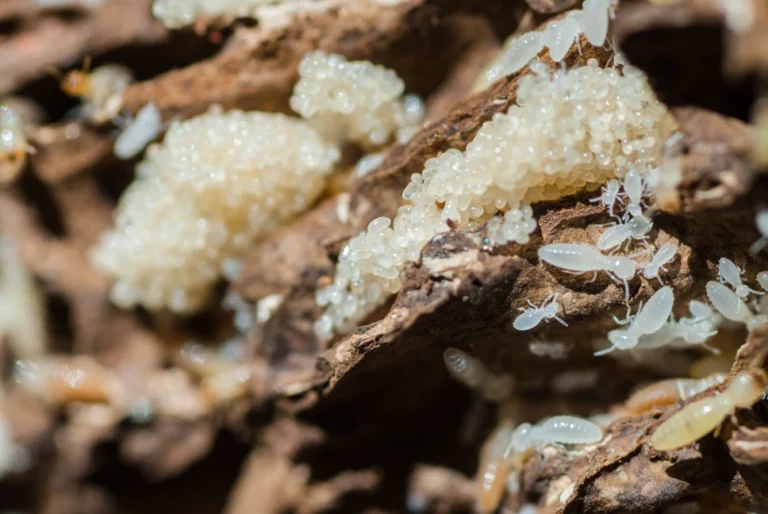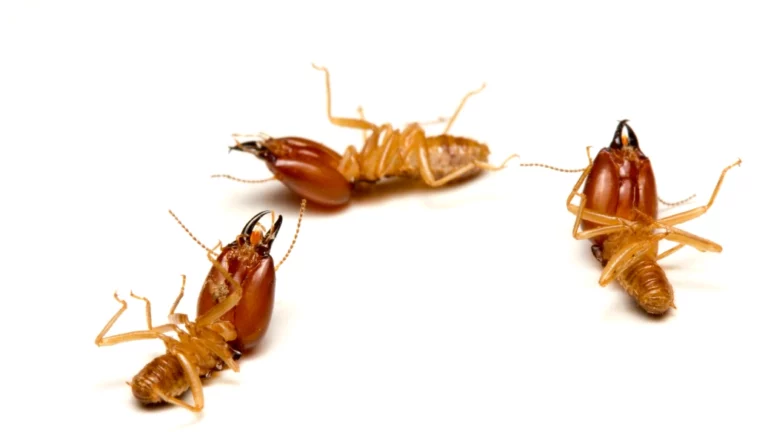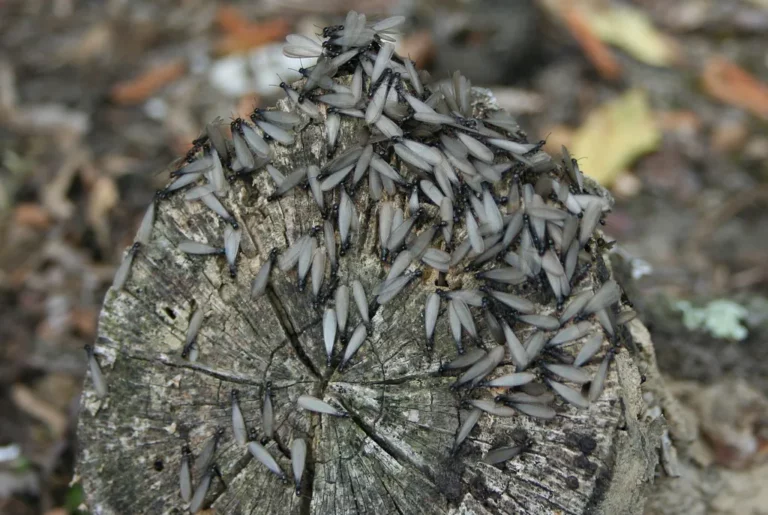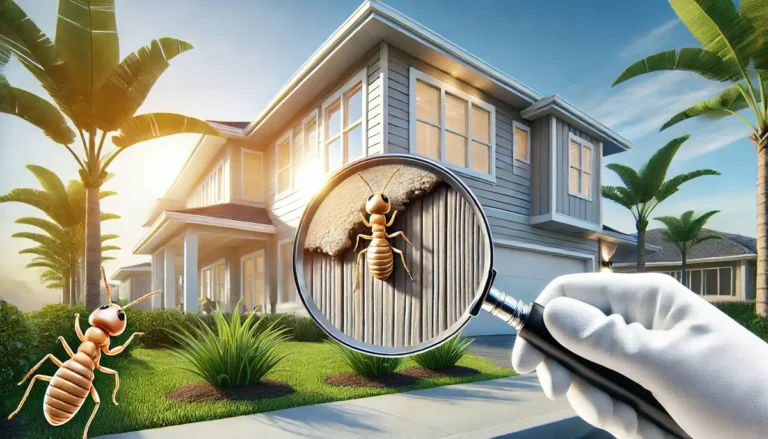Table of Contents
ToggleAs a homeowner, discovering swarming termites inside your house can be devastating. Termites typically infest and damage wooden elements of a home, including baseboards, door frames, and posts. After the termite colony matures, it produces many reproductive termites with wings. These termites then fly out of the colony.
Termites spread and form new colonies with the help of termite swarmers, which occur naturally. Such swarms can take place inside or outside a home. Swarmers enter homes through “exit holes” which are tiny openings in walls made by worker termites for exiting the colony. These holes are typically located higher up on the wall.
When a swarm of termites occurs, it usually only lasts for about 30 to 40 minutes. As they swarm, termites are attracted to light sources and tend to gather around windows and sliding glass doors. Without soil to sustain them, these termites will succumb to dehydration within a few hours.
When termites swarm and you’re not at home, you may find dead swarmers and their wings near light sources on windowsills, countertops, or other nearby areas. This is what remains following a termite swarm.
Termite activity and the potential damage they may cause is usually first noticed by homeowners when a swarm occurs. Although the swarmers themselves do not damage or eat the home, it is their numerous colony members that pose a threat.
Termites: Devouring Your Home and Budget
The USDA estimates that termites cause $5 billion of damage annually in the U.S. Termites cause approximately $1 billion in damages each year to residential areas alone. A termite infestation in a common US residence could result in over $3000 in repairing damages. The cost varies based on the severity and size of the termite swarm.
The states of Oklahoma, Louisiana, Virginia, Tennessee, Georgia, South Carolina, North Carolina, Texas, and Florida experience termite swarming due to their warm and humid climates. In these areas, termites can easily create new colonies and spread their infestations. It is crucial for both homeowners and business owners to know and identify signs of termite activity.
Tips On How to Get Rid of Swarmer Termites:
DO NOT:
- Panic. Worry and fear can be overwhelming emotions that make it difficult to think or act rationally.
- If you come across a group of insects like termites or flying ants, don’t use canned insect spray. Using the spray will not be required in the event that the insects do not have access to soil. They can naturally die without any intervention.
- To prevent swarmers from escaping, it is not advisable to use tape or other materials to seal the holes. This will prompt them to create new openings.
DO:
- To control swarming insects, you can contain them in a few ways. A possible approach is to close the door of the room where they are situated. Another method is to cover the exit hole with a clear plastic bag, causing the swarmers to fly into it.
- To get rid of flying termites completely, you can vacuum the swarmers and dispose the full bag in the trash. This will kill the swarmers and prevent them from spreading.
- Collect a bag of insects to present to an expert inspector.
- It is important to identify signs of termite infestation and the type of termite present. If you notice any activity, it is best to contact a professional pest control company.
A trained inspector can identify the type of termite and recommend the best pest control method to solve the problem. Look up a trustworthy professional pest control company, like On Demand Pest Control, that can help you with your termite infestation problem.
If you think there may be a swarm of termites in your home you can schedule a free termite inspection by clicking here. The inspection will help you determine the best course of action. There are no obligations that are required. If you want to learn more about our termite treatments, click here!




